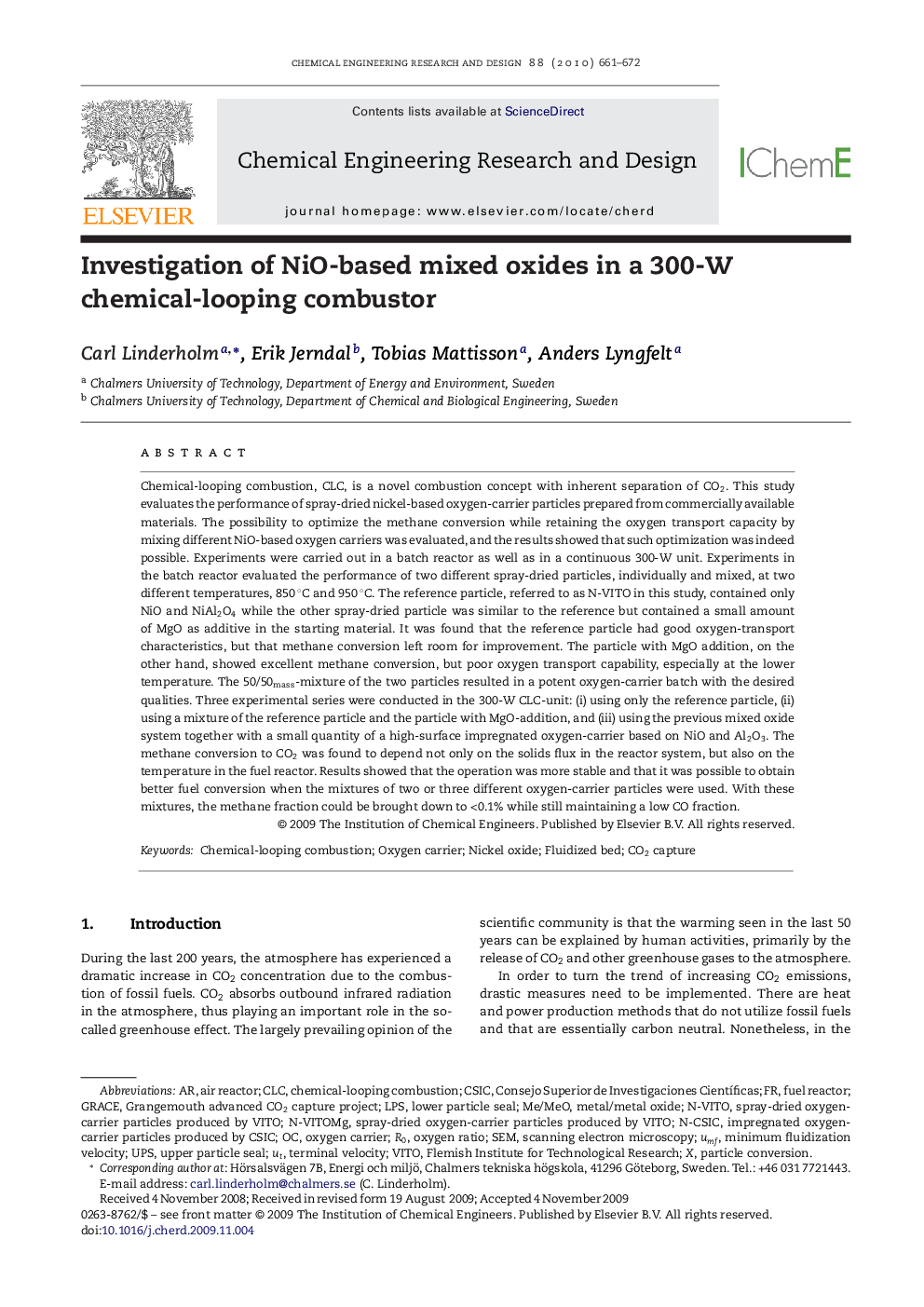| Article ID | Journal | Published Year | Pages | File Type |
|---|---|---|---|---|
| 622265 | Chemical Engineering Research and Design | 2010 | 12 Pages |
Abstract
Chemical-looping combustion, CLC, is a novel combustion concept with inherent separation of CO2. This study evaluates the performance of spray-dried nickel-based oxygen-carrier particles prepared from commercially available materials. The possibility to optimize the methane conversion while retaining the oxygen transport capacity by mixing different NiO-based oxygen carriers was evaluated, and the results showed that such optimization was indeed possible. Experiments were carried out in a batch reactor as well as in a continuous 300-W unit. Experiments in the batch reactor evaluated the performance of two different spray-dried particles, individually and mixed, at two different temperatures, 850 °C and 950 °C. The reference particle, referred to as N-VITO in this study, contained only NiO and NiAl2O4 while the other spray-dried particle was similar to the reference but contained a small amount of MgO as additive in the starting material. It was found that the reference particle had good oxygen-transport characteristics, but that methane conversion left room for improvement. The particle with MgO addition, on the other hand, showed excellent methane conversion, but poor oxygen transport capability, especially at the lower temperature. The 50/50mass-mixture of the two particles resulted in a potent oxygen-carrier batch with the desired qualities. Three experimental series were conducted in the 300-W CLC-unit: (i) using only the reference particle, (ii) using a mixture of the reference particle and the particle with MgO-addition, and (iii) using the previous mixed oxide system together with a small quantity of a high-surface impregnated oxygen-carrier based on NiO and Al2O3. The methane conversion to CO2 was found to depend not only on the solids flux in the reactor system, but also on the temperature in the fuel reactor. Results showed that the operation was more stable and that it was possible to obtain better fuel conversion when the mixtures of two or three different oxygen-carrier particles were used. With these mixtures, the methane fraction could be brought down to <0.1% while still maintaining a low CO fraction.
Keywords
Related Topics
Physical Sciences and Engineering
Chemical Engineering
Filtration and Separation
Authors
Carl Linderholm, Erik Jerndal, Tobias Mattisson, Anders Lyngfelt,
